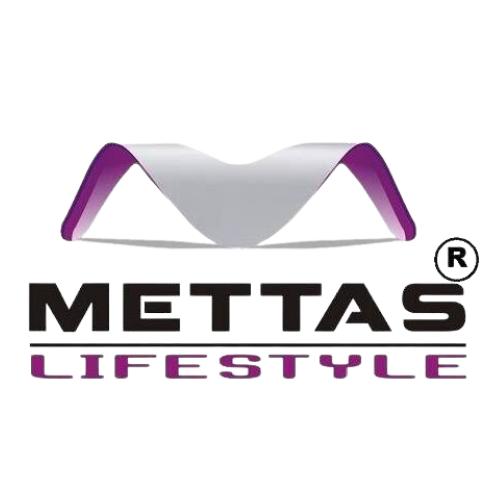

Table of Contents
ToggleIntroduction of 304-Grade Stainless Steel:
In the world of metallurgy, stainless steel reigns supreme as a remarkable material that offers a unique blend of strength, corrosion resistance, and aesthetic appeal. Among the various grades of stainless steel, one name that stands out prominently is “304 grade.” This blog aims to delve deep into the intricacies of 304-grade stainless steel, shedding light on its composition, properties, applications, and advantages by Mettas Lifestyle.
1. Understanding 304 Grade Stainless Steel:

304-grade stainless steel, often referred to as 18-8 stainless steel, is a widely used alloy composed of iron, chromium, and nickel. This alloy is celebrated for its exceptional corrosion resistance, making it an ideal choice for a myriad of applications, both industrial and domestic.
Composition and Characteristics:
At its core, 304-grade stainless steel consists of 18% chromium and 8% nickel, imparting its remarkable resistance to oxidation and corrosion. The combination of these elements also grants the alloy its distinctive luster and versatility. Additionally, the inclusion of manganese further enhances its structural integrity.
Physical and Mechanical Properties:
- Corrosion Resistance: 304-grade stainless steel exhibits impressive resistance to various corrosive environments, including exposure to acids, alkalis, and atmospheric conditions.
- Strength and Durability: With a tensile strength of around 621 MPa and good flexibility, 304 stainless steel is suitable for applications demanding structural integrity.Tempe-mature mature Performance: The alloy retains its mechanical properties even at elevated temperatures, further expanding its applicability.
2. Applications of 304 Grade Stainless Steel:

The versatility of 304-grade is evident in its extensive array of applications across various industries.
Architectural and Aesthetic Applications:
- Kitchen Appliances: Stainless steel appliances owe their timeless appeal to 304-grade stainless steel’s sleek and clean look.
- Interior Design: Railings, handles, and decorative elements benefit from both the alloy’s aesthetics and corrosion resistance.
Industrial Applications:
- Chemical Processing: stainless steel’s resistance to chemical corrosion makes it valuable in industries handling acids, solvents, and caustic materials.
- Food and Beverage Industry: It is widely used in equipment and containers for processing and storing consumables due to its non-reactive nature.
- Pharmaceutical Industry: The alloy’s hygienic properties suit it for medical equipment, storage, and manufacturing processes.
Structural Applications:
- Construction: 304-grade stainless steel finds its way into building structures, bridges, and components due to its durability and aesthetic appeal.
- Automotive Industry: The alloy is employed in exhaust systems, trims, and structural components, benefiting from its corrosion resistance.
3. Advantages of 304-Grade Stainless Steel:

The popularity of 304-grade stainless steel can be attributed to several compelling advantages.
Cost-Effectiveness:
While some specialized stainless steels may offer higher resistance to specific elements, 304 grade provides an optimal balance between cost and performance, making it a cost-effective choice for many applications.
Corrosion Resistance:
The alloy’s exceptional resistance to corrosion and oxidation significantly extends the lifespan of products, reducing maintenance costs and enhancing long-term value.
Low Maintenance:
The inherent ability of stainless steel to maintain its appearance without extensive upkeep makes it an attractive choice for applications where aesthetics matter.
Conclusion:

In conclusion, the 304 grade stands as a testament to the remarkable achievements of material science. Its composition, properties, and applications make it a cornerstone of modern engineering and design. From architectural marvels to industrial powerhouses, stainless steel’s versatility shines brightly. So, whether you’re constructing a building that echoes elegance or engineering equipment that demands resilience, remember that 304-grade stainless steel might just be your perfect ally.
By now, you’ve gained a comprehensive understanding of 304-grade, and you’re well-equipped to make informed decisions about its use in various projects. So go ahead, harness the potential of this remarkable alloy, and witness its transformative power in action.
Related topics you must read: What Causes Rust in Stainless Steel Modular Kitchens?





1 comment. Leave new
[…] Have questions about your next renovation project? We’ve got answers. Let’s do this together. […]